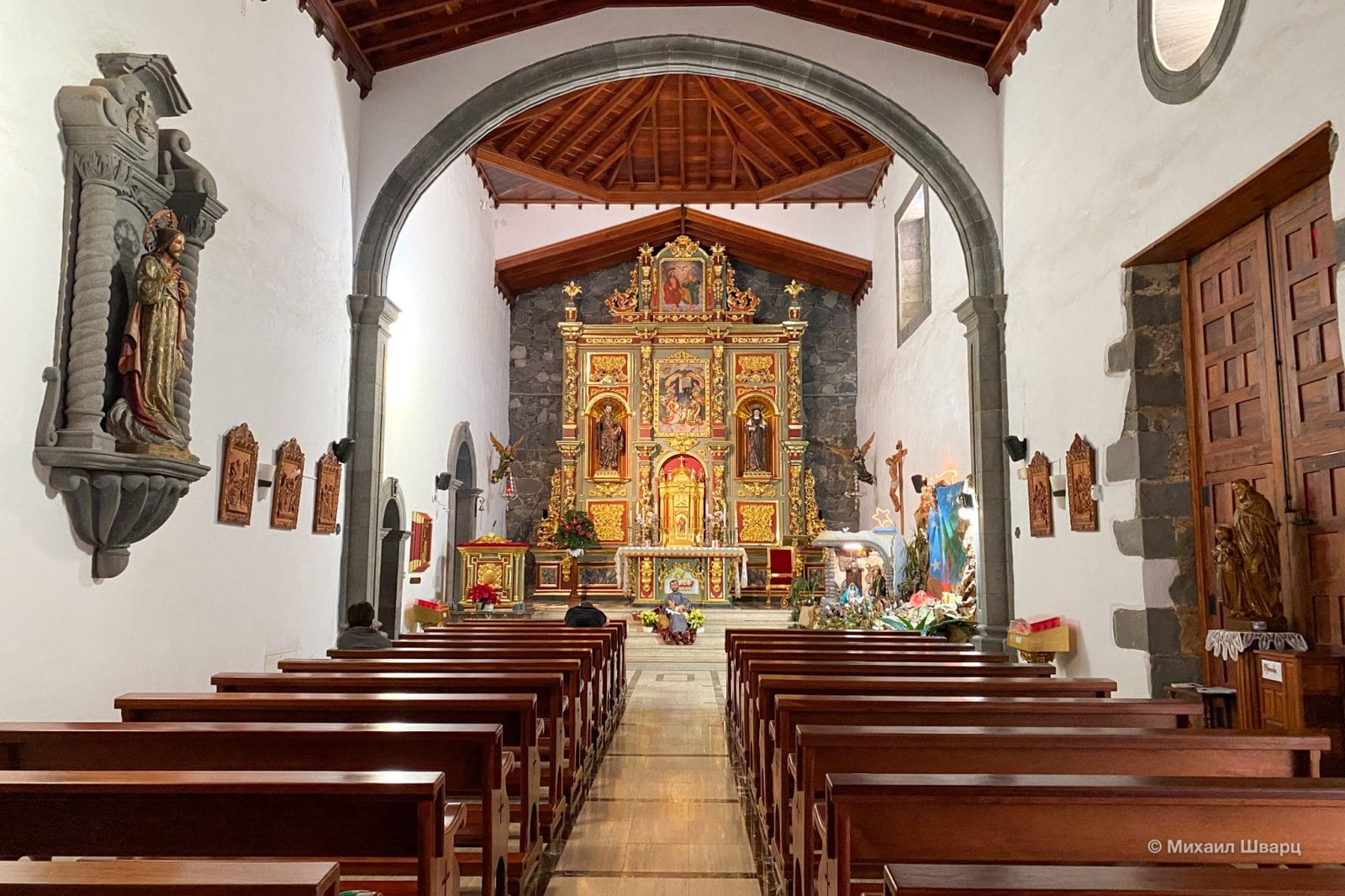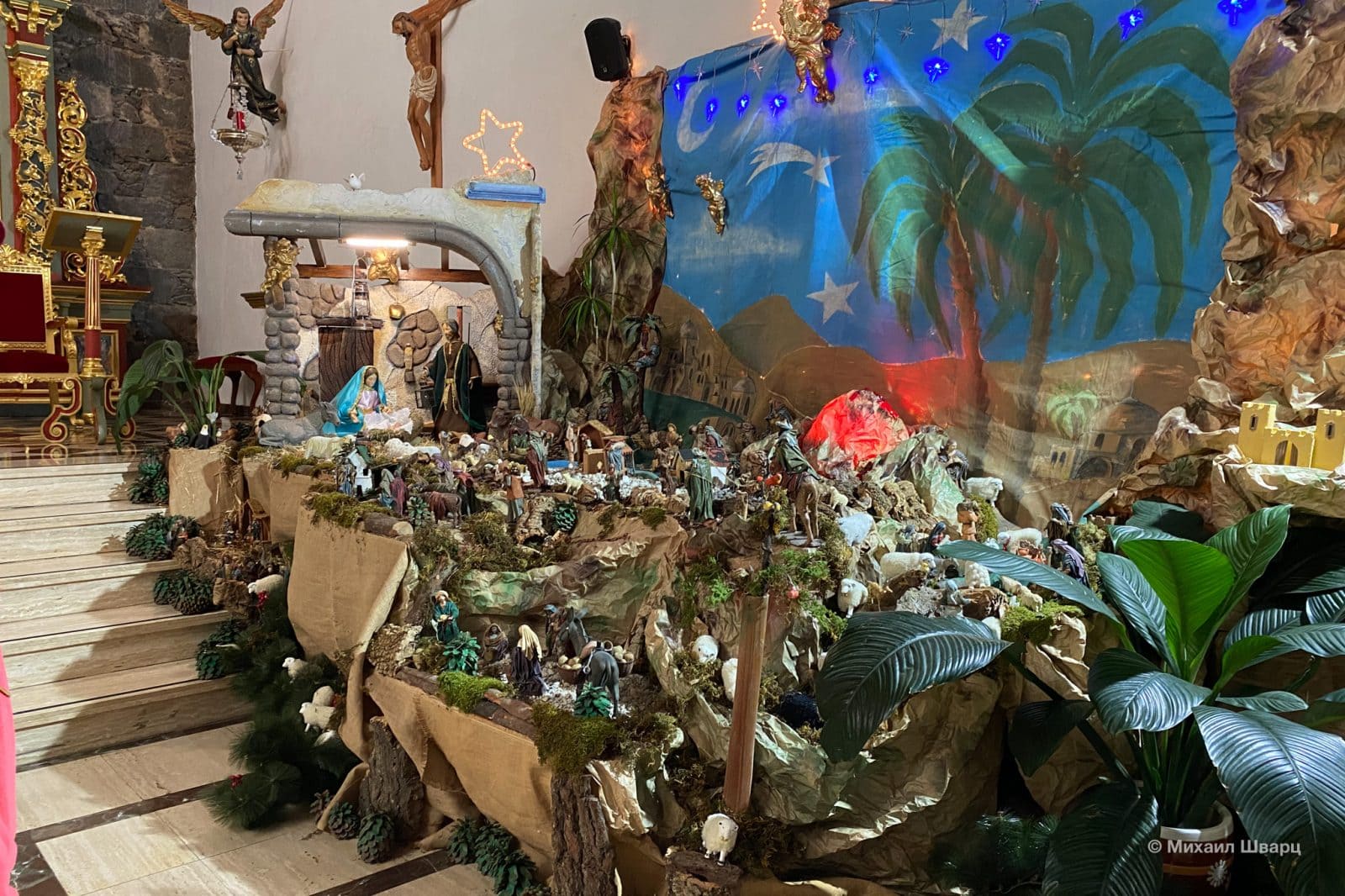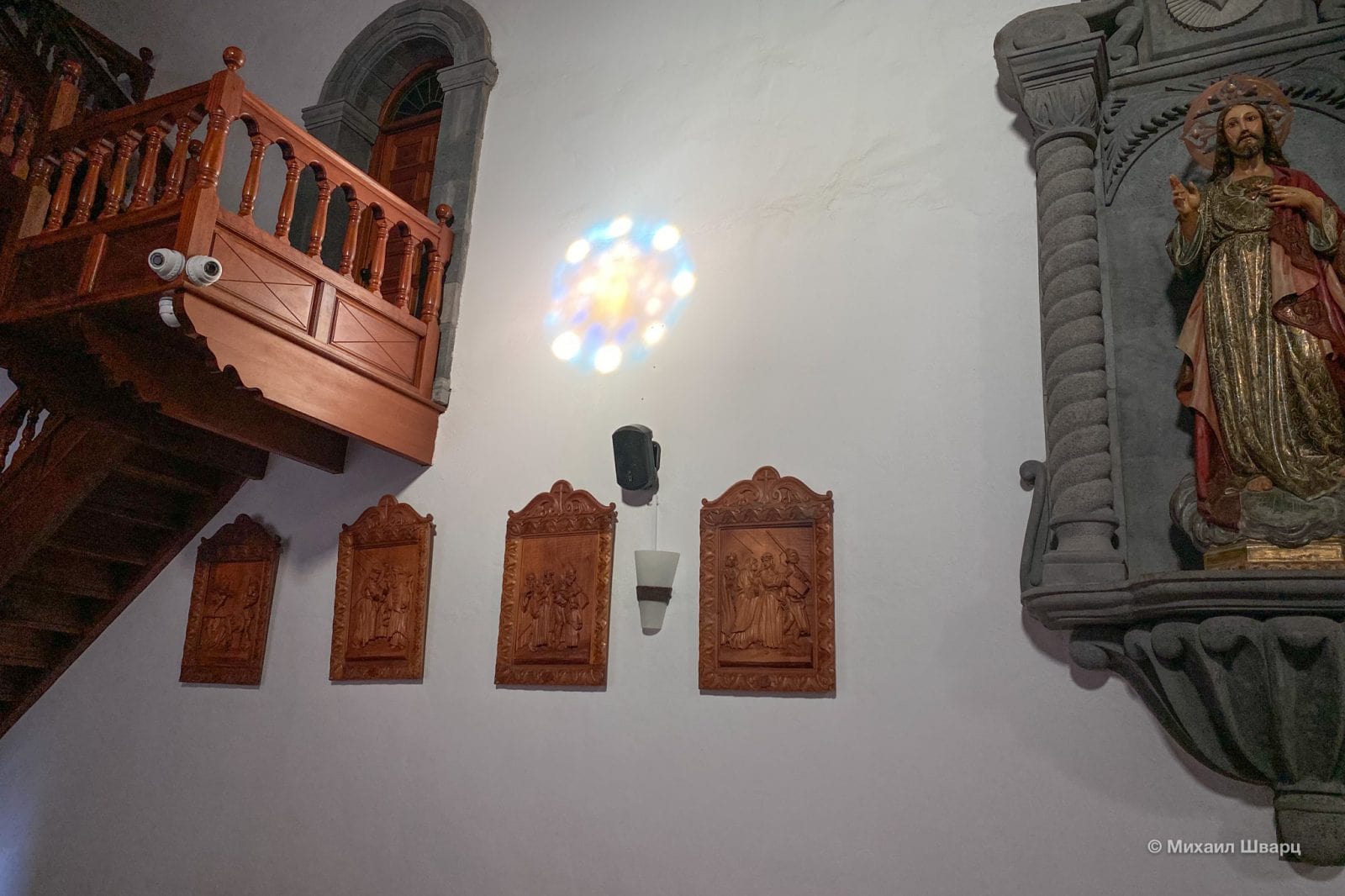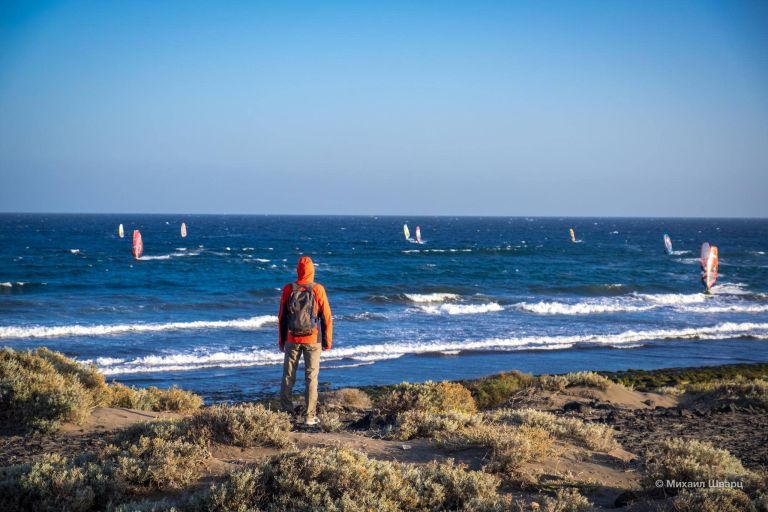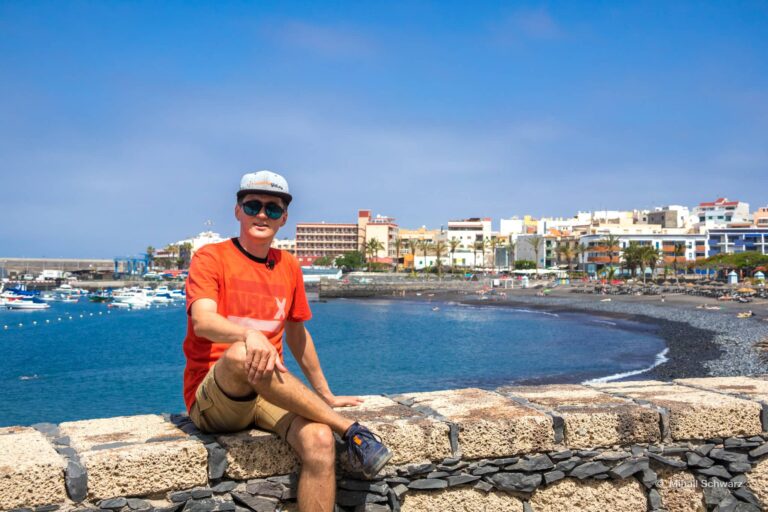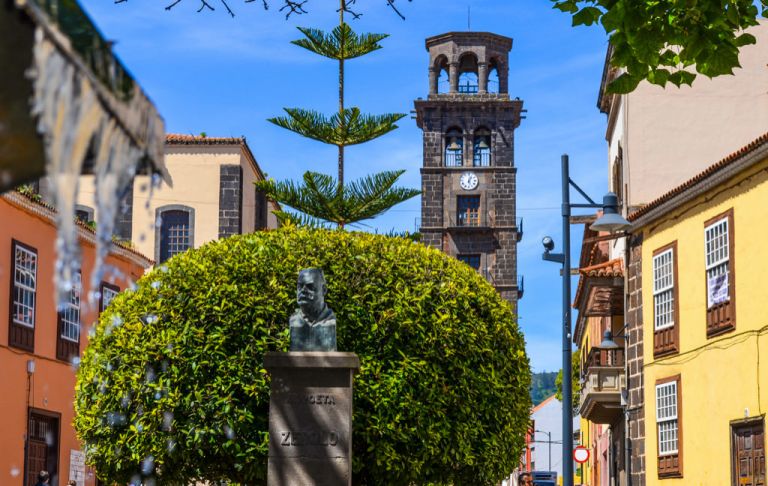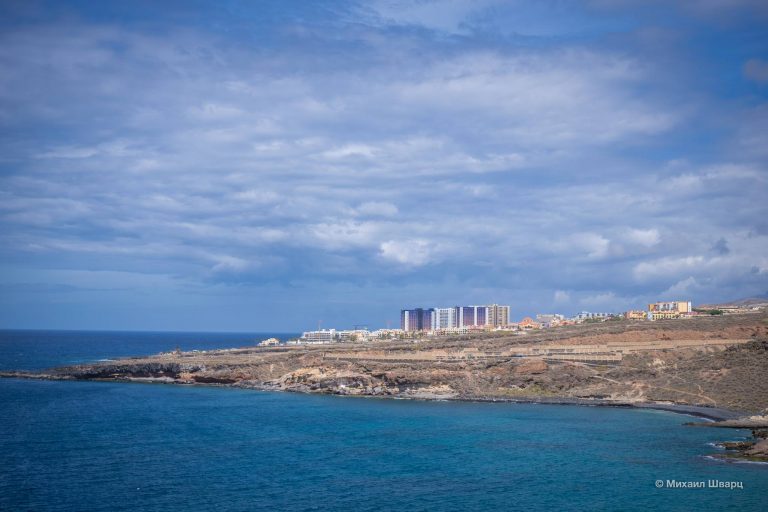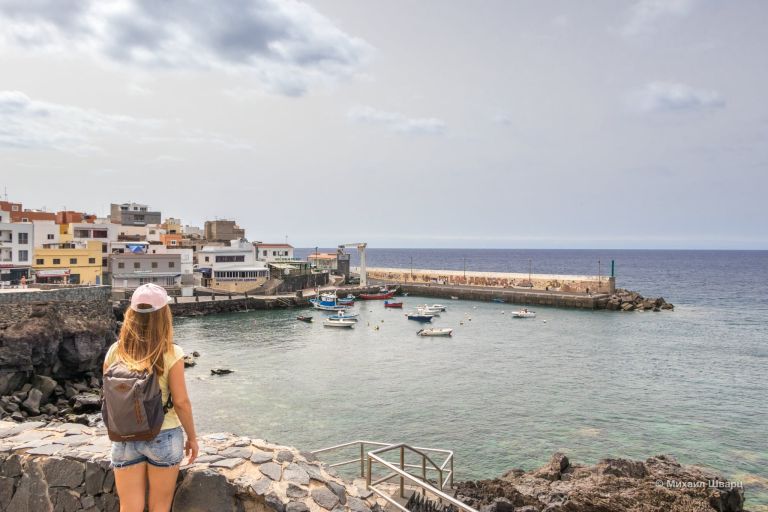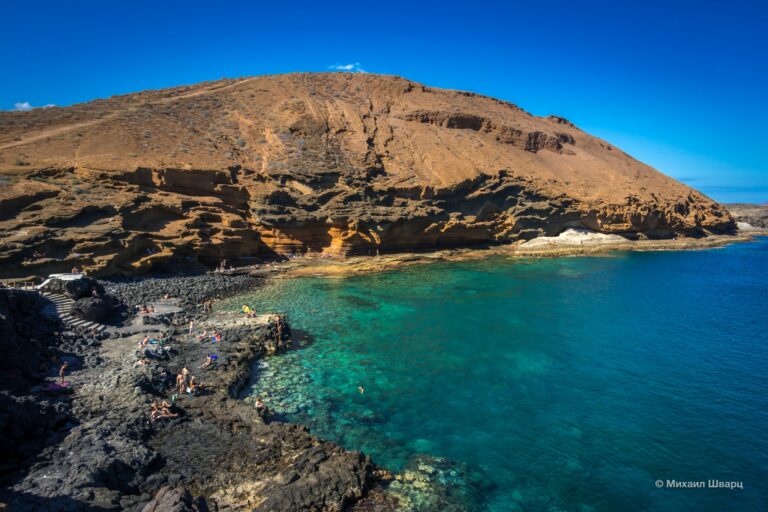The town of Vilaflor (Vilaflor) is the administrative capital of the municipality of Vilaflor de Chasna (Vilaflor de Chasna). It is the highest inhabited place on the island of Tenerife. The elevation above sea level here reaches 1460 m. And since the town is built in a south-facing valley and protected from strong winds, the sky here is almost always clear. At night, the bright stars Acrux and Eta Carinae, which are 8,000 light-years from Earth, stand out in the starry sky.
How Vilaflor Arose
The town of Vilaflor was founded by Catalan settlers Pedro Soler and his wife Juana de Padilla in 1525. Over time, the town became the administrative and religious center of the Chasna region.
In Vilaflor in 1626, Pedro de San José Betancur was born — a monk and missionary, the first saint of the Canary Islands and Guatemala.
The Toponymy of the Town
Before the arrival of Europeans in the 15th century, the Guanches lived on these lands. They grazed cattle on the high mountain pastures. Chasna («step») is what the gorge was called, where the Guanches drove their cattle. The town also came to be called that. The modern name Vilaflor appeared in the 16th century. The French botanist and ethnologist Sabenu Bertlo put forward his version of the origin of the name. In his book, he told a legend about a Castilian conquistador who, seeing a beautiful Guanche woman, exclaimed: «I saw the flower of Chasna!» (Vi la flor de Chasna!) That’s how they named the town — Vilaflor. In 2014, the Island Council decided to restore the historical name of the municipality and rename it Vilaflor de Chasna.
The residents of Vilaflor are called chasneros, -as, after the original name of the town.
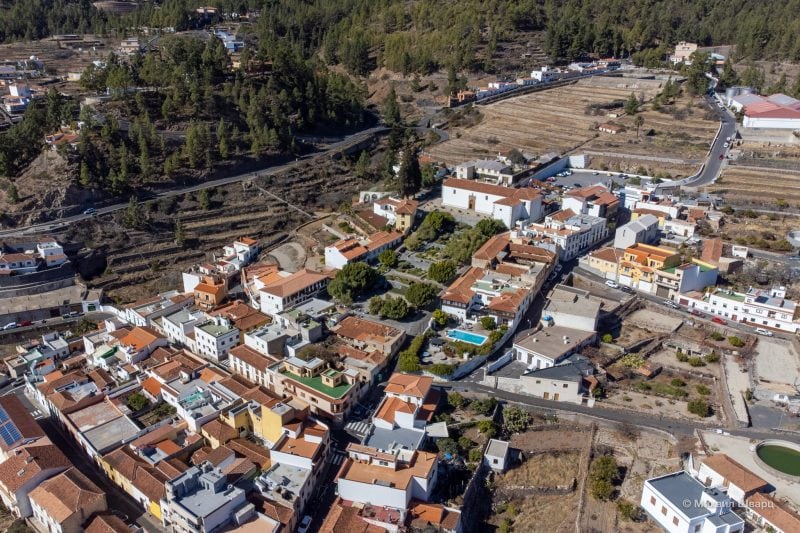
Canarian Potatoes, Grapes, and Tourism
The basis of the city’s economy is agriculture. Here they grow the famous Canarian potatoes, grapes, almonds and figs, collect honey, and raise goats. All agricultural products are organic. Tourism in Vilaflor is not as massive as on the coast. People come here to enjoy the beautiful landscapes, see the sights of the early development of the island, participate in festivals, buy handmade products, go mountain biking, paragliding, rock climbing, camp, and enjoy Canarian cuisine.
Fuentealta Mineral Water
In Vilaflor, at an altitude of 1400 m, the Fuentealta mineral water spring (manantial de Fuente Alta) was discovered. Today, the bottling of Fuentealta water is carried out by the Aguas de Vilaflor S.A. factory.
Attractions
San Pedro Apostle Church
Santo Hermano Pedro Sanctuary
Soler Family House
El Cubo Water Mill
El Pino Gordo Pine Tree
Pino de las Dos Pernadas Pine Tree
Plaza de San Roque Viewpoint
Lunar Landscape
Montaña Colorada Nature Reserve
Parking
Casa Pana Restaurant
Hotel Spa Villalba****
Ziggys Boutique Bed & Breakfast
St. Peter the Apostle Parish Church
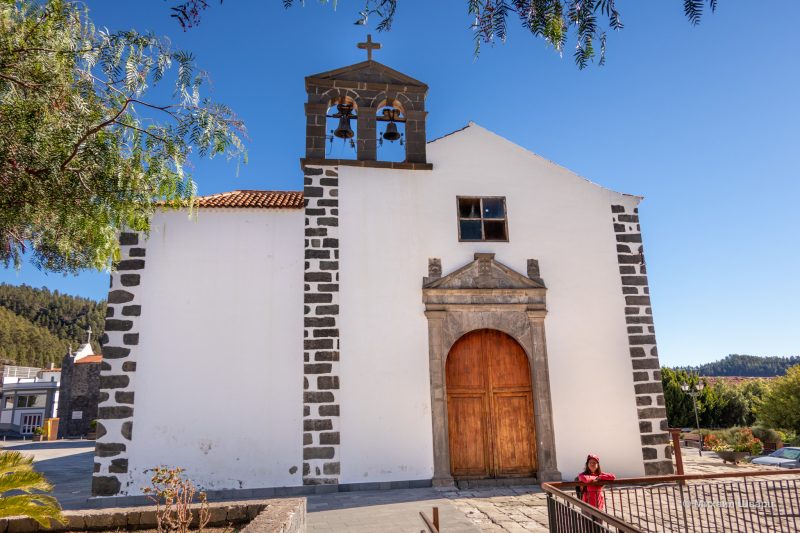
The Parish Church of San Pedro Apóstol (St. Peter the Apostle) is one of the oldest in the south of the island. Its history began with a modest chapel built around 1530 on the initiative of Pedro Soler and his wife. In 1568, the chapel was elevated to the status of a parish church on the condition that the Soler family would expand it. Between 1615–1675, a new church, which we see today, was built on the site of the chapel.
In 1626, Pedro de San José Betancur, the first saint of the Canary Islands, was baptized in the Church of San Pedro Apóstol.
The church has a single nave and a Latin cross plan. Its whitewashed stone walls are reinforced with basalt tiles on the sides. Above the main entrance, there is a simple square window and a bell tower. Inside the church, there are 2 chapels connected to the presbytery, as well as a 16th-century baptistery with a font and a sacristy with a Canarian balcony.
The church houses a rich artistic heritage. In the left niche of the main altar, there is the most valuable sculpture – an alabaster image of San Pedro from the 16th century. In the right niche, there is a sculpture of Santo Hermano Pedro de Bethencourt created in 1981. The central niche holds an 18th-century image of the Virgin Mary wearing a crown and a silver crescent moon. The papal tiara and crossed keys can be seen in the upper part.
There are two side altars – one made of wood and the other decorated with frescoes. The church also contains several antique altarpieces. The coffered ceiling is in the Mudéjar style. Wooden choir stalls have been built above the main entrance.
Inside the church, you can find symbols of the Soler family – a sun carved on a stone arch and an oval wooden shield.
In 1985, the Catholic church in Villaflor was declared an Object of Cultural Interest.
Sanctuary of Santo Hermano Pedro
The Sanctuary of Santo Hermano Pedro (Santuario del Santo Hermano Pedro) is one of the three pilgrimage sites dedicated to Pedro de San José Betancur, the first saint of the Canary Islands. Previously, there was a house on this site where he was born.
The construction of the sanctuary began in 1766 with the arrival of the Bethlehem Brothers, but due to political reforms in the 19th century, the work was halted. In 1981, the Bethlehem Sisters resumed the construction. The sanctuary was solemnly opened and blessed in 2002.
The Sanctuary of Santo Hermano Pedro is a single-nave stone church adjacent to the Bethlehem Sisters’ monastery. Its main relics are a vertebra of the saint and a bell used to call the faithful.
In the central part of the main altar of the sanctuary, there is a relief depicting the scene of the Nativity of Christ in Bethlehem. On either side, there are images of Santo Hermano Pedro and the Guatemalan Blessed María Encarnación Rosal.
The Camino del Hermano Pedro pastoral route, along which the saint led his flock to the Cueva del Santo Hermano Pedro (Cave of Santo Hermano Pedro), begins at Santo Hermano Pedro.
Casa de Los Soler
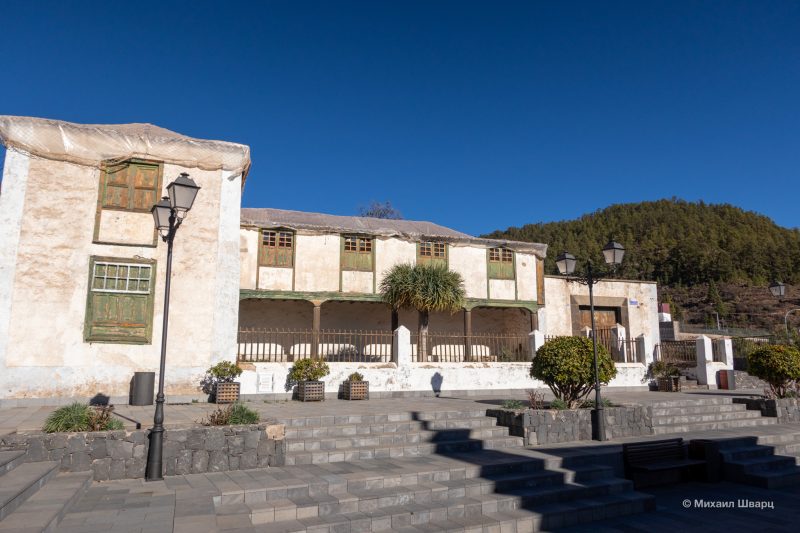
The Casa de Los Soler (House of the Soler Family) is located opposite the Church of San Pedro Apóstol. It is also known as the House of the Marquesses de Soler. It is a prime example of traditional Canarian architecture from the 17th century. It was built by Pedro Soler and his wife in the early 16th century. Until the 19th century, it was the residence of the Soler family. The architecture of the current building dates back to the 17th century, as the original structure was damaged during an uprising of the town’s residents against the Soler family.
The Casa de Los Soler is a two-story, L-shaped building. It features an open inner courtyard, a portico corridor, and stone columns on the first floor, an enclosed gallery on the second floor, a wooden staircase, and a wooden door in a stone frame – all typical elements of traditional Canarian architecture. At the back of the house, there is a press that the Soler family used for winemaking over the centuries.
Today, the Casa de Los Soler belongs to the Island Council.
Molinos del Cubo
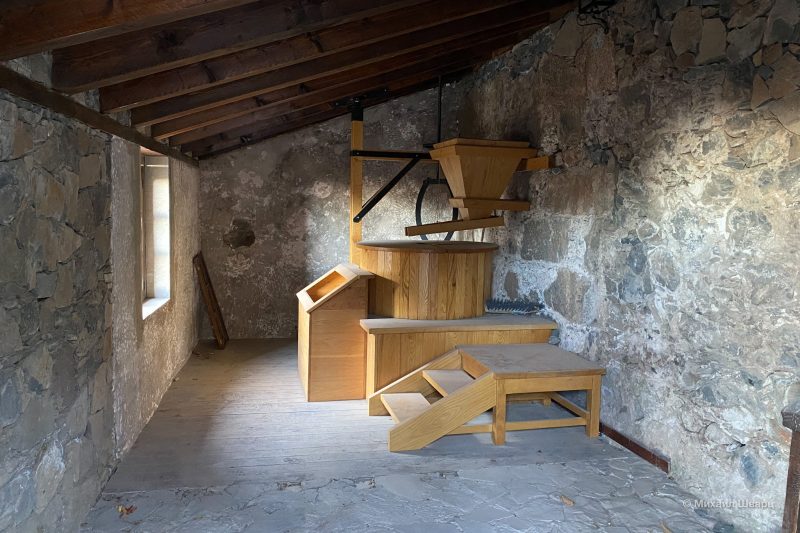
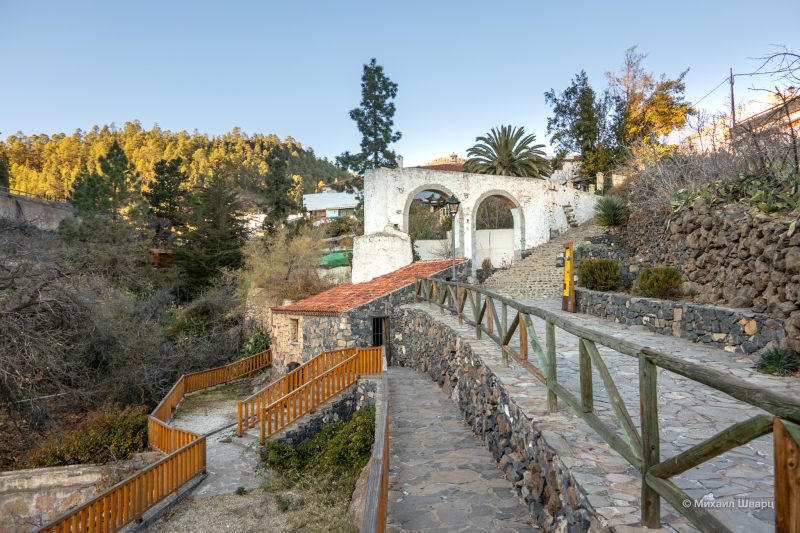
The El Cubo watermill (Molinos del Cubo) was the first mill in Villaflor. It was built in 1644 in a ravine near the Casa Soler to grind flour and gofio (roasted corn flour). The water came from the El Chorrillo area. The mill was in operation until 1915. The milling system, arches, and part of the water pumping system are still in good condition.
Canarian Pines – El Pino Gordo and Pino de Las Dos Pernadas
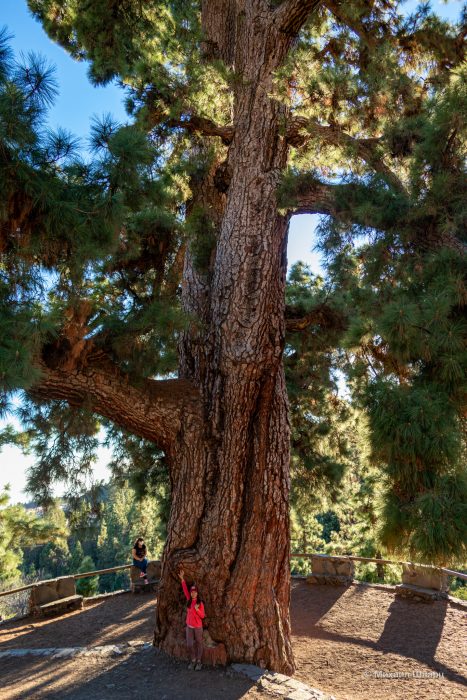
The Canarian pines El Pino Gordo and Pino de Las Dos Pernadas rank 2nd and 3rd in Spain by size. They are also among the oldest trees on the island, along with the thousand-year-old Drago Tree (El Drago) in Icod de los Vinos and Viñátigos in Bosque de Agua Garcia.
Those planning to visit the Teide National Park from the southern part of the island should definitely see these two impressive specimens, which grow practically on the side of the road.
The El Pino Gordo pine: height — 45.12 m, crown circumference — about 10 m, trunk diameter — 3.16 m, and perimeter — 9.5 m. It would take 7 people to encircle the tree. The age of the pine is approximately 700-800 years. If you have a secret wish, put your hand in the tree’s hollow, and it will surely come true.
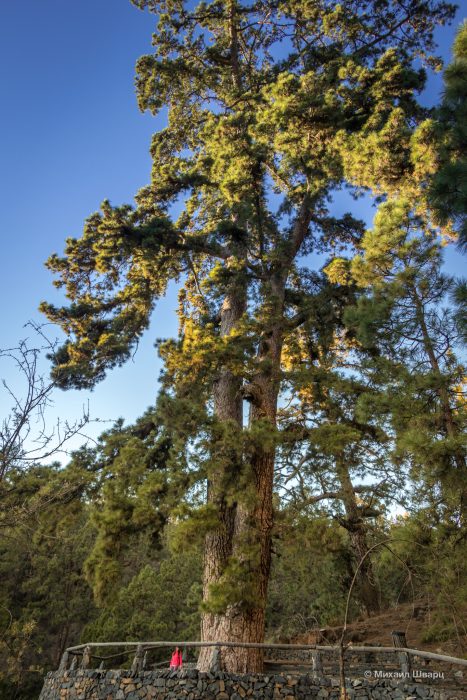
The Pino de Las Dos Pernadas pine is the tallest non-introduced tree in Spain, at a height of 56.8 m, with a trunk circumference of 8.3 m, and an age of 500-600 years.
Plaza de San Roque Viewpoint
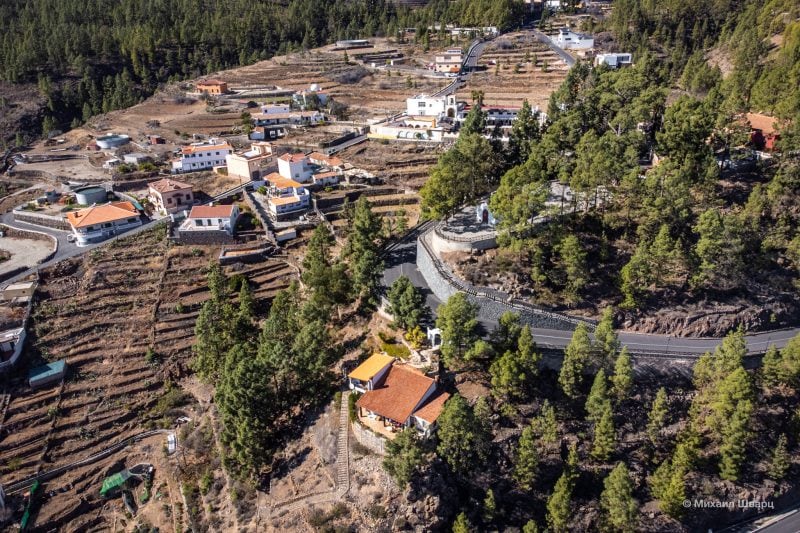
Overlooking the town of Vilaflor is a hill with the Plaza de San Roque viewpoint, offering stunning views of the historic town center and the southern part of the island. The viewpoint features a small chapel of San Roque (Ermita de San Roque), built by the Soler family in 1614.
Lunar Landscape
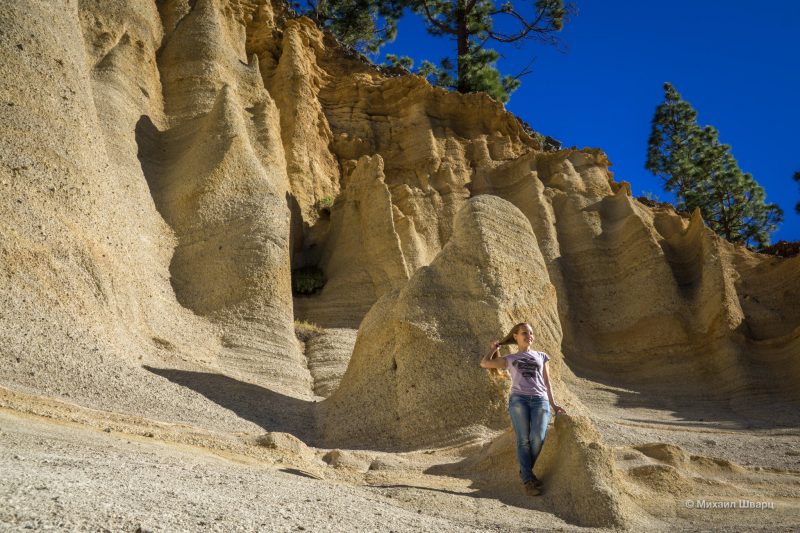
From Vilaflor, an easy hiking trail PR-TF 72 leads to an amazing mountain formation resembling a lunar landscape. The bizarre stone waves and polished cones literally glow against the dark volcanic slopes and blue sky. Nature itself carved these figures from porous light tuff, once ejected during the eruption of Teide. The round-trip hike to the Lunar Landscape (Paisaje Lunar) area is approximately 12.9 km.
I wrote about the Lunar Landscape on Tenerife here.
Montaña Colorada Nature Monument
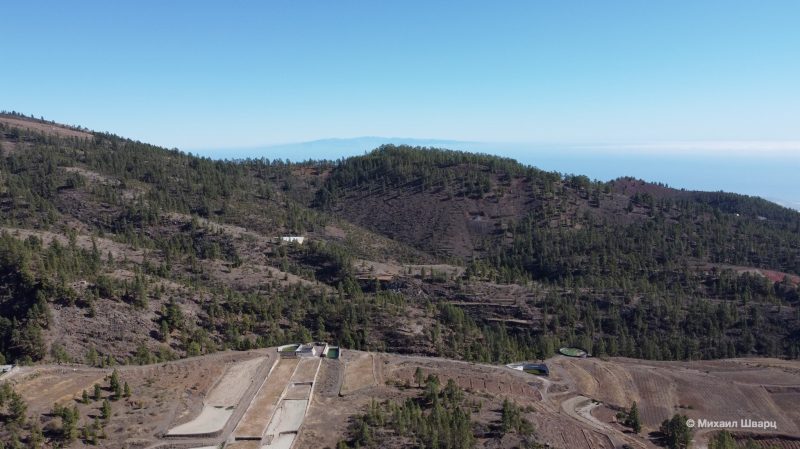
The Montaña Colorada Natural Monument (Monumento Natural Montaña Colorada) covers an area of 515.3 hectares and is a protected natural area featuring the calderas of three volcanoes of different origins: La Montaña de las Mesas, Montaña Colorada, and Montaña Rica.
The oldest was Lomo de Simón, which erupted around 500,000 years ago, but its crater was destroyed by erosion. On its slopes, three volcanic cones later formed: Montaña de Las Mesas, Montaña Colorada, and Montaña Rica, which eventually buried Lomo de Simón. Today, the volcanic calderas resemble small mountains covered with Canarian pines. Plant life includes rock roses (Cistus symphytifolius and Cistus monspeliensis), asparagus (Asparagus plocamoides), houseleeks (Aeonium spathulatum), and Sonchus acaulis. The monument’s fauna is not very rich, with only some insects and birds like the Eurasian sparrowhawk (Accipiter nisus) and long-eared owl (Asio otus) being noteworthy. Almost all plants and animals are endemic.
Montaña Colorada rises 1,414 m above sea level, with a relative height of 44 m.
Montaña Rica: absolute height — 1,088 m above sea level, relative height — 45 m.
Montaña de Las Mesas: absolute height — 1,530 m, relative height — 36 m.
Parking
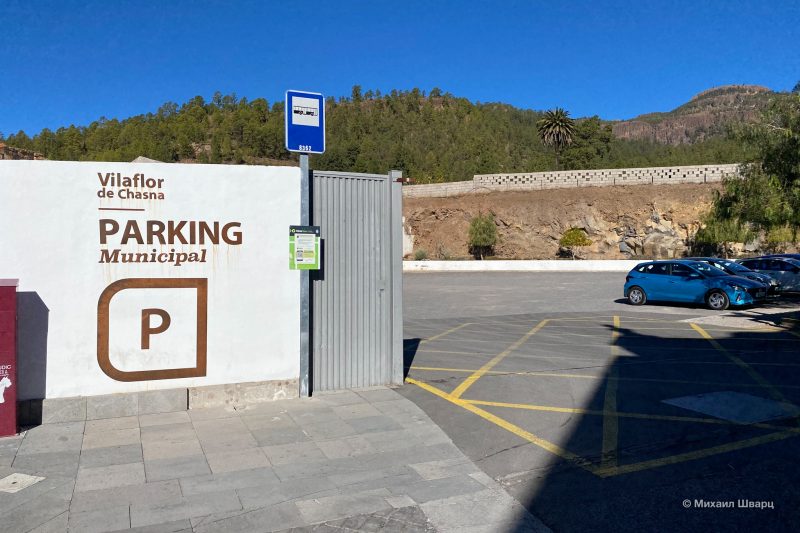
Leave your car at the free town parking lot. Its coordinates.
Where to eat in Vilaflor?

I recommend the Casa Pana Restaurant with a cozy terrace. Order these dishes:
- Queso terno asado con miel — grilled Canarian cheese with honey
- Almogrote con pan — soft Canarian cheese with bread
- Carne de Cabra — goat meat
- Conejo en salmorejo — Canarian rabbit
- Papas arrugadas negras — Canarian wrinkly potatoes
- Local wine and bread with Canarian mojo sauces
Hotels in Vilaflor
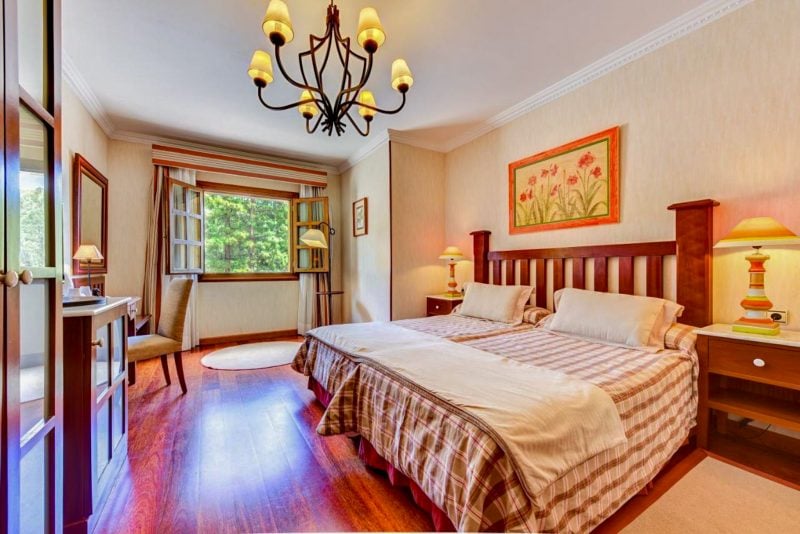
Hotel Spa Villalba**** — a spa hotel;
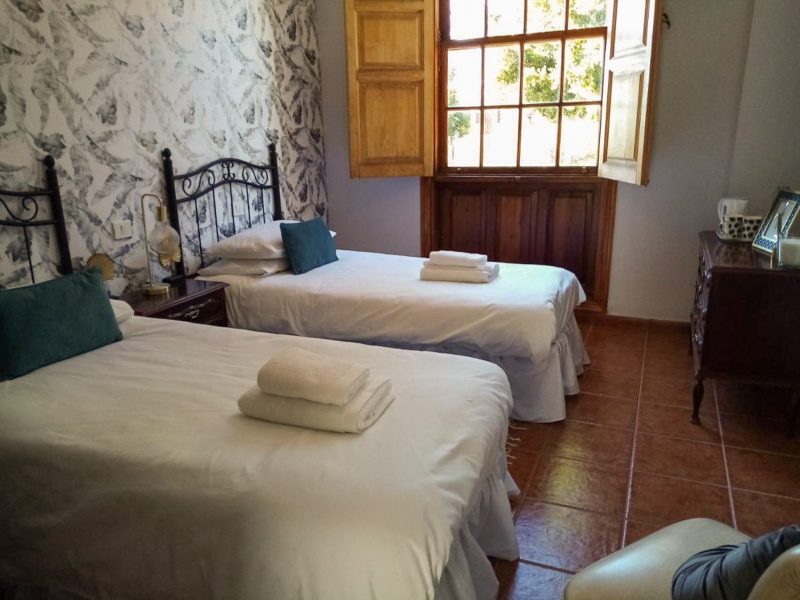
Ziggys Boutique Bed & Breakfast — a boutique bed & breakfast.
How to get to Vilaflor
From Los Cristianos
At the Los Cristianos bus station (Estacion de guaguas Los Cristianos), take bus 482 going to Vilaflor Centro. The journey takes 32 minutes (28 stops), and you get off at the Santa Catalina stop.
From Costa Adeje
To get to Vilaflor from Costa Adeje, first you need to get to Los Cristianos.
At the Estación de Guaguas stop (in Costa Adeje), take bus 467 heading to Costa del Silencio. Travel for 15 minutes, 8 stops. Get off at the Escuela Oficial de Idiomas stop (Los Cristianos) and transfer to bus 482 going to Vilaflor Centro. The journey will take 42 minutes (34 stops). Get off at Santa Catalina.
Another option: at the Estación de Guaguas, take bus 418 going towards Valle San Lorenzo (T). After 23 minutes (13 stops), get off at the La Camella (T) stop and transfer to bus 482 to Vilaflor Centro. Travel for 23 minutes (22 stops). Get off at Santa Catalina.
- Вилафлор
- Vilaflor
- Адрес: Vilaflor, Santa Cruz de Tenerife, Испания
- site
- GPS: 28,15979178725049 -16,63715619216092



